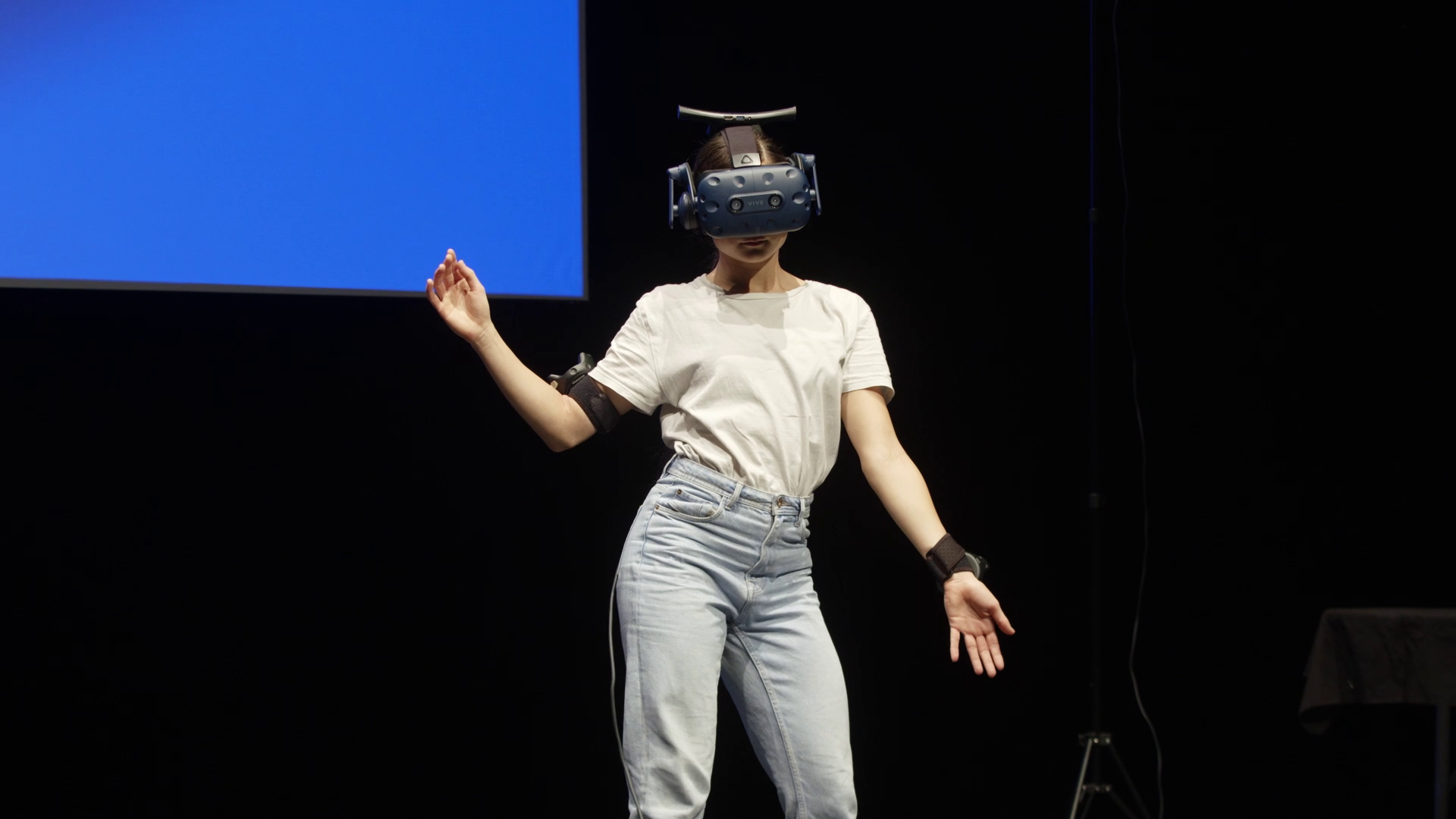Object Oriented Choreography (OOC) presents itself as a VR performance/performed installation, at the intersection between the actual and the virtual. In the context of OOC, a performer donning a VR headset becomes the gaze and the engine of an ever-changing apparatus: a zone composed of people, objects, digital platforms, electromagnetic signals, spaces and timings, an accidental interlocking of logistics, dynamics, and rules that allow it to exist, to evolve, and eventually to disappear.
In order to stress the digital complexities our lives are embedded in, OOC proposes a performative approach that juxtaposes two kinds of intelligence: that of the physical body and that of the artificial viewpoint. From their intermingling and interaction, fragments of a choreography emerge, following, and directing streams of information and user inputs. OOC is a mutual, collaborative device: it is dependent on the input of an audience and at the same time it grants and enables their flow, resembling a machinic intelligence with the performer as the interface. The ever-changing system of networks, connections, and platforms that inspire OOC, imply that this project wants to be an evolving performative tool. It could be a chatroom where the performer engages in role-play, where she becomes a server that delivers the messages from/to the participants, or a multiplayer musical instrument with the performer remixing sounds sent by users. Through a combined effort of imagining, listening, and direct involvement, the audience is partaking in a process of empathy, resonating with the entire software architecture and its single entities (users, data, algorithms, etc.). How do these entities perceive and inhabit our world? What consistency does their reality have? Guided by the movements of the performer and by her digital gaze, we can learn to relate on a human scale with this strange object-oriented choreography. The project was made in co-production between Triennale Milano and Ariella Vidach Aiep.
